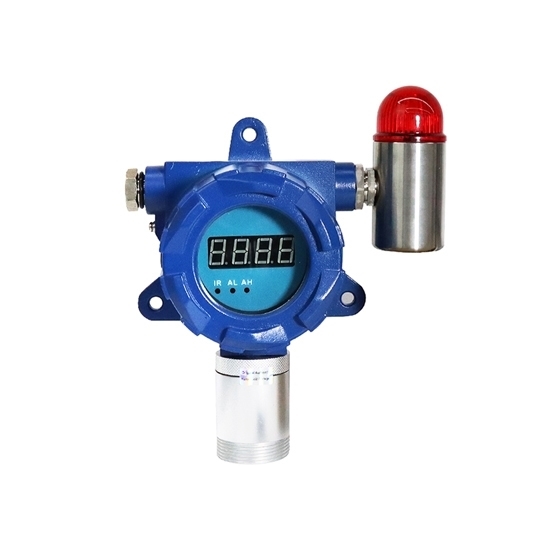
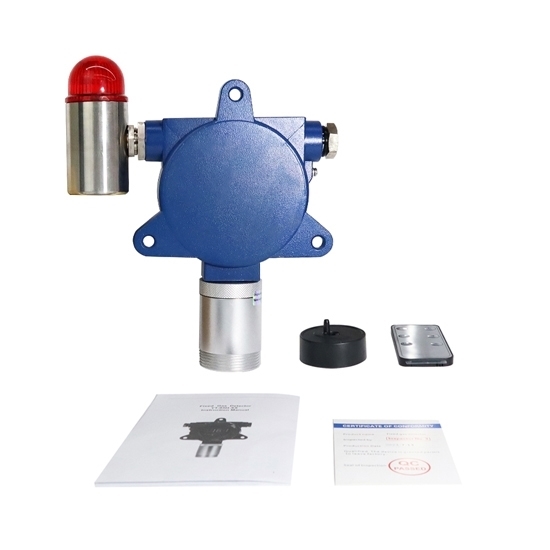
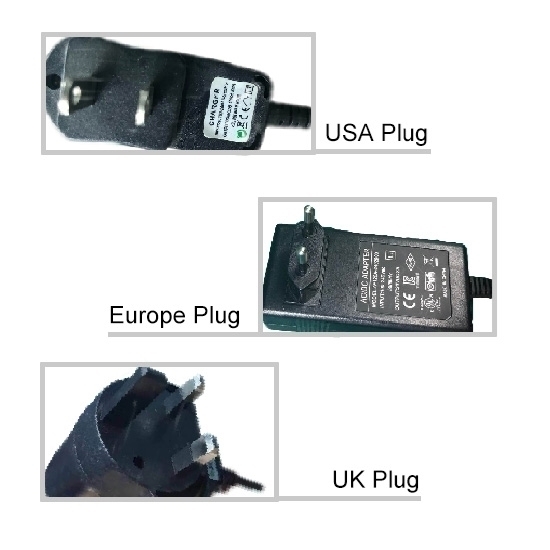
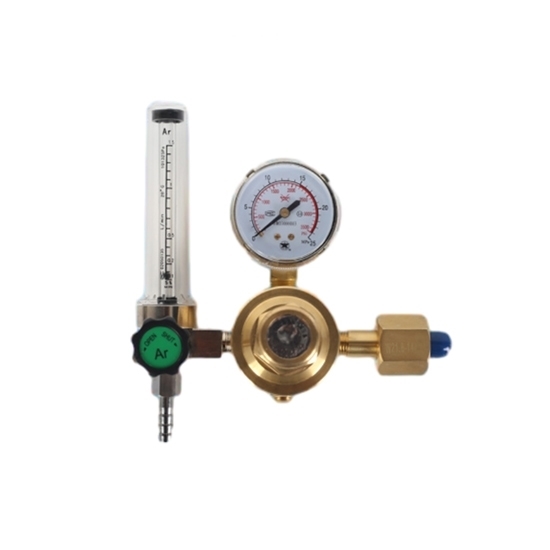
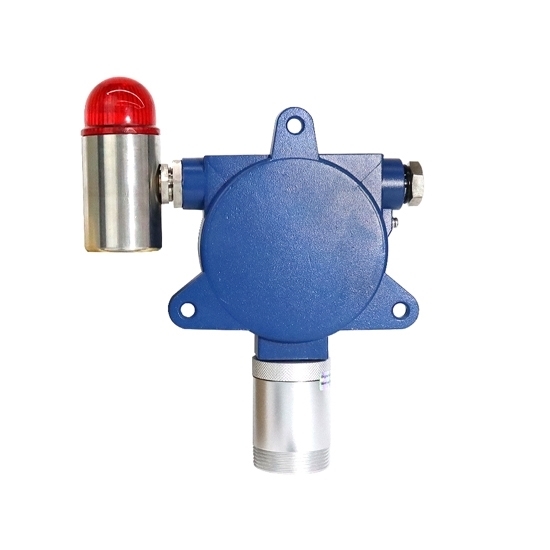
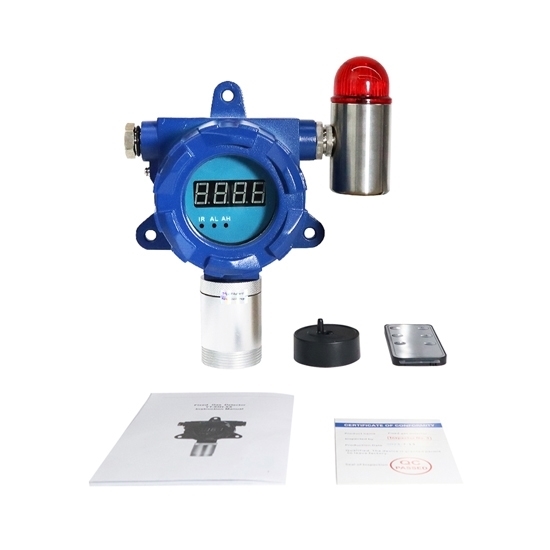
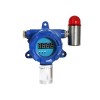
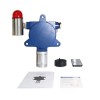
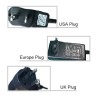
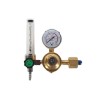
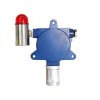
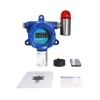
- Stock: In Stock
- Model: GD300-NOX
- Weight: 1.00
- SKU: GD300-NOX
Available Options
RDDLZ fixed NOX gas detector is a stationary device designed to continuously monitor and detect the presence of Nitrogen Oxides (NO and NO2) in the environment. Nitrogen Oxides are harmful pollutants commonly found in industrial settings, power plants, and areas with heavy vehicle traffic.
Features
- Fixed NOX gas detector adopts high precision sensor for accurate gas leak detection.
- Nitrogen Oxides gas detector is equipped with 3-wire system 4-20mA analog output, relay output, RS485 output (optional).
- The Nitrogen Oxides gas monitor is compatible with various controlled alarms, PLC, DCS and other control system, and can be remote monitored.
- Explosion-proof design, fast, relaible and stable.
- Infrared ray controller can remote control the alarm point settings, zero calibration, and address modification.
- Two-stage alarm with sound and light, and the alarm point is settable.
- The industrial NOX gas detector has self-calibration function, and three standard keys will be used to realize on-site maintenance.
- Fixed Nitrogen Oxides gas detector can output one or two on-off signals, can drive ventilator, solenoid valve or other external devices.
Specification
| Model | GD300-NOX |
| Detection Principle | Electrochemistry |
| Gas | Nitrogen Oxides (NOX) |
| Range (Optional) | 0 to 1ppm, 0 to 5ppm, 0 to 10ppm, 0 to 20ppm, 0 to 50ppm, 0 to 100ppm, 0 to 250ppm, 0 to 500ppm, 0 to 1000ppm |
| Resolution | 0.001ppm (0-1/5ppm), 0.01ppm (0-10/20/50ppm), 0.1ppm (0-100/250ppm), 1ppm (0-500/1000ppm) |
| Calibration Kit | Gas pressure regulator (calibration gas cylinder NOT included) |
| Accuracy | ≤±3% F.S. |
| Response Time | ≤10s |
| Repeatability | ≤±1% |
| Recovery Time | ≤10s |
| Linearity Error | ≤±1% |
| Zero Shift | ≤±1% (F.S./year) |
| Signal Output (Optional) | 4-20mA and RS485 Relay output: one group of relay output (1NO+1NC, 24V 100mA) for one alarm (default), or two groups of relay output (2NO+2NC, 24V 100mA) for high/low alarm (optional). |
| Alarms | Sound, light |
| Display | High light nixie tube display |
| Installation | Wall-mounted, piping type, flow-type (according to the detected environment) |
| Connection | Power connection type: G1/2 male thread explosion-proof flexible pipe Pipe-mounted type: M45*P2.0 |
| Operating Time | 24h |
| Explosion-proof Grade | Ⅱ 2G Ex ia Ⅱ CT4 Ga |
| Protection Grade | IP65 |
| Certification | CE, ATEX (Standard: EN IEC 60079-0:2018, EN 60079-1:2014) |
| Working Voltage | 12-36V DC |
| Case Material | Die-casting aluminum housing |
| Operating Temperature | -20℃~50℃ |
| Operating Humidity | 0~95%RH (non-condensing) |
| Dimension | 206*179*90mm |
| Weight | ≤1.6kg |
| Accessories | Power adapter: Input 100-240VAC 50/60Hz, Output 24VDC 1A (Optional USA plug, Europe plug or UK plug) |
Note: To measure confined spaces such as pipelines, please contact us and inform the detailed conditions of use.
Fixed Nitrogen Oxides (NOX) Gas Detector Dimension (Unit: mm)
***Other Common Gases and Ranges Available for Fixed Gas Detectors
| Gas Type | Measure Range | Resolution |
| Ammonia (NH3) | 0-50/100/200/500/1000/2000/5000ppm | 0.01ppm/0.1ppm/1ppm |
| Benzene (C6H6) | 0-1/10/50/100/200/1000/2000/5000/10000ppm | 0.001ppm/0.01ppm/0.1ppm/1ppm |
| Carbon Dioxide (CO2) | 0-1000/2000/5000/9999ppm, 0-2/5/10/20/25/30/50/100%VOL | 0.1ppm/1ppm/0.001%VOL/0.01%VOL/0.1%VOL |
| Carbon Monoxide (CO) | 0-10/20/50/100/500/1000/2000ppm | 0.01ppm/0.1ppm/1ppm |
| Chlorine (Cl2) | 0-5/10/20/50/100ppm | 0.001ppm/0.01ppm/0.1ppm |
| Chlorine Dioxide (ClO2) | 0-1/5/10/20/50/100ppm | 0.001ppm/0.01ppm/0.1ppm |
| Combustible Gas (EX) | 0-100%LEL | 1%LEL |
| Ethylene (C2H4) | 0-10/20/50/100/500/1000/2000ppm | 0.01ppm/0.1ppm/1ppm |
| Formaldehyde (CH2O) | 0-10/20/50/100/500/1000ppm | 0.01ppm/0.1ppm/1ppm |
| Hydrocarbons (HC) | 0-100%LEL | 1%LEL |
| Hydrogen (H2) | 0-10/20/500/1000/2000/5000/9999ppm, 0-2/4% VOL, 0-100% LEL | 0.1ppm/1ppm/0.001%VOL/1%LEL |
| Hydrogen Chloride (HCL) | 0-10/20/50/100/200ppm | 0.01ppm/0.1ppm |
| Hydrogen Cyanide (HCN) | 0-10/20/50/100ppm | 0.01ppm/0.1ppm |
| Hydrogen Sulfide (H2S) | 0-5/20/50/100/200ppm | 0.001ppm/0.01ppm/0.1ppm |
| Methane (CH4) | 0-50/100%VOL, 0-100%LEL | 0.01%VOL/0.1%VOL/1%LEL |
| Nitric Oxide (NO) | 0-1/5/10/20/50/100/250/500/1000ppm | 0.001ppm/0.01ppm/0.1ppm/1ppm |
| Nitrogen (N2) | 0-99.99/0-100%VOL | 0.01%VOL/0.1%VOL |
| Nitrogen Dioxide (NO2) | 0-1/5/10/20/50/100/500/1000ppm | 0.001ppm/0.01ppm/0.1ppm/1ppm |
| Nitrogen Oxides (NOX) | 0-1/5/10/20/50/100/250/500/1000ppm | 0.001ppm/0.01ppm/0.1ppm/1ppm |
| Oxygen (O2) | 0-25/30/100%VOL | 0.01%VOL/0.1%VOL |
| Ozone (O3) | 0-1/5/10/20/50/100ppm | 0.001ppm/0.01ppm/0.1ppm |
| Phosphine (PH3) | 0-10/20/50/100/500/1000/2000/3000ppm | 0.01ppm/0.1ppm/1ppm |
| Sulfur Dioxide (SO2) | 0-1/5/10/20/50/100/500/1000ppm | 0.001ppm/0.01ppm/0.1ppm/1ppm |
| Volatile Organic Compounds (VOC) | 0-1/5/10/20/50/100/200/500/1000/2000/5000/10000ppm | 0.001ppm/0.01ppm/0.1ppm/1ppm |
Note: Some common gases and the measuring ranges are listed in the above table. For more information, please feel free to contact us.
Details
Tips: Where should fixed NOX gas detectors be installed?
Fixed NOX gas detectors should be installed in locations where nitrogen oxide gases are likely to accumulate, ensuring optimal safety and monitoring efficiency. Key areas include:
- Near Sources of Emission: Position detectors close to potential Nitrogen Oxides emission sources such as boilers, furnaces, engines, and industrial processes that involve combustion.
- Ventilation Systems: Install detectors in HVAC systems and exhaust ducts to monitor and control indoor air quality.
- Low-Lying Areas: Since NOX gases can be heavier than air, placing detectors at lower levels can help in the early detection of leaks.
- Enclosed Spaces: Areas like basements, tunnels, or enclosed parking garages where Nitrogen Oxides can accumulate due to poor ventilation should have detectors.
- Entry and Exit Points: Place detectors near doors, windows, and other openings to monitor NOX entering or leaving confined spaces.
Regular maintenance and calibration are essential to ensure accurate detection and response to NOX gas levels. Proper installation in these strategic locations enhances safety and compliance with environmental regulations.
